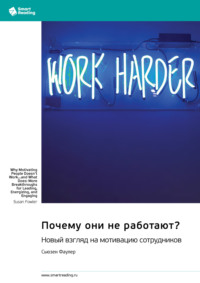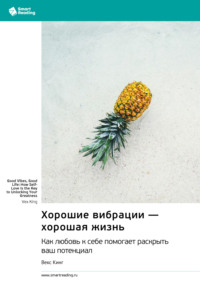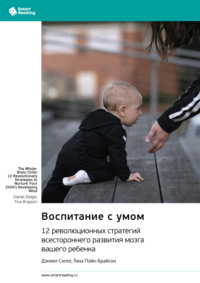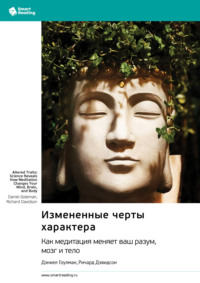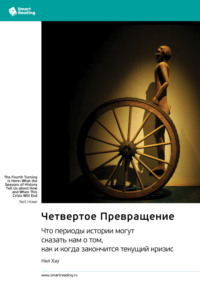
Полная версия
Summary: Full Catastrophe Living. Using the Wisdom of Your Body and Mind to Face Stress, Pain, and Illness. Jon Kabat-Zinn

Summary: Full Catastrophe Living. Using the Wisdom of Your Body and Mind to Face Stress, Pain, and Illness. Jon Kabat-Zinn
Автор:
Jon Kabat-Zinn
Оригинальное название:
Full Catastrophe Living. Using the Wisdom of Your Body and Mind to Face Stress, Pain, and Illness
www.smartreading.ru
This book opens the door to the world of self-growth, self-enquiry, and healing. It will be useful to people who want to achieve inner peace, balance, and control over their body and those experiencing chronic pain and other health issues.
The book is based on stress relief courses offered at the Medical School of the University of Massachusetts. The healing method described here does not replace medical treatment, but it can become a reliable helping hand on your way to recovery. It is based on the assumption that our mind has a great impact on our physical state. Many medical studies show that psychological factors can either protect a person from illnesses or vice versa, increase susceptibility to them.
The first step on the way to healing and the foundation of this method is learning mindfulness. Mindfulness is one of the most important meditation practices. It is achieved by focusing our attention on things we are used to ignoring in our everyday life, and which we take for granted.
Mobilizing your inner resources to heal you is a process that requires energy and the desire to work on yourself. You shouldn’t expect someone to do this job for you. Using this practice you will learn to work with pain and stress directly, and this is the best way to learn how to cope with physical and emotional suffering. Self-discipline and practicing this method regularly are the key components to being successful at it.
What should you expect from meditation? What mindset should you have? How does it affect people’s physical state? How can it help us resist the many causes of stress in our lives? You’ll find the answers in this book. But the main thing is, don’t just read up on the theory of meditation, you need to practice it. You’ll see that it’s not difficult at all. Many types of meditation can be practiced at home, at work or in public transportation. It’s important to practice daily, whether you want to or not, whatever your schedule or physical state is. Pick a time that works for you even if it’s only five minutes a day.
In other words, meditation should become a part of your life, not just a set of exercises. Only by accepting this will you get to know yourself and feel the healing power of regular practice.
Practicing Mindfulness: Back to the Source Code
Every day on your way to work you see trees and buildings around you. You walk, drive, or take public transportation following a specific route, you live your day adhering to your regular pattern and everything seems familiar and ordinary. All this feels mundane and routine. But once you’ve changed your way of thinking, everything changes and becomes colorful, and you start seeing new opportunities and crawl out of the box of your mindset and limited view of life. Only in this way can we live every moment, penetrate its meaning and feel our wholeness.
Mindfulness practice stems from the Buddhist meditation tradition, but in one form or another it is present in many other spiritual practices. This practice’s special significance is teaching people to listen to their inner dialogues, listening to their judgements of themselves, and discovering the limitations they set for themselves, which in turn program us for achieving certain results. Does your inner voice think you won’t cope with the new job you’ve landed or won’t manage to make your special dream come true, because you don’t have enough energy, skills, or experience? Most likely that’s exactly how it’ll turn out. The reason for this is that our inner world determines our behavior and, consequentially, outcome.
Systemically training our brain, by practicing mindfulness for example, helps us free ourselves from automatic behavioral patterns.
Mindfulness is awareness and complete presence in every single moment. With the help of mindfulness almost any everyday activity can become meditation. Therefore, we can escape autopilot mode and inject ourselves into living in the present. We can respond to changes and cope with potentially stressful situations because we are in tune with our wholeness and know that we are part of a bigger whole – the Universe – and that we are interconnected.
Every human is initially whole, but sometimes it seems that our pain, worries and troubles in life disturb this wholeness. Basically, meditation is a way to retrieve wholeness and break the chains of habitual thinking. This is the internal work that leads to healing.
Meditation and Healing
When thanks to meditation we begin feeling our wholeness and, at the same time, part of a larger whole, our conscious starts changing and transforming, which leads to the path of healing.
Healing achieved through meditation is not actually the treatment of a physical illnesses. Nonetheless, many medical studies prove that there is a connection between our psychological and physical state. Our actions are based on thinking patterns. We use patterns when we make decisions, and these very patterns form our attitude toward ourselves and the world around us.
Dr. Martin Seligman, University of Pennsylvania professor and founder of the positive psychology school of thought, discovered that a pessimistic mindset puts people at risk of disease while an optimistic mindset has a protective effect against disease and premature death. Lifestyle, thoughts and actions may have a huge impact on people’s health. Moreover, scientists have proved that a predisposition to certain diseases depends on a person’s thought patterns. For instance, some studies show that a tendency to feel anger may lead to hypertension, and others traits like hostility and cynicism may lead to ischemic atrophy of the heart. While, at the same time, such psychological traits as optimism, empathy, and the perception that one’s life is full and manageable are associated with good health.
Naturally, such conclusions are based on statistical data and represent probability. We can only state that a greater number of people get sick and die prematurely with the abovementioned behavioral and thinking patterns.
Scientists have also proved that our immune system, which is in charge of protecting our organism from cancerous diseases and viral infections (among other things), is partially regulated by our nervous system. That’s why people’s thoughts, attitudes and emotions can bring on disease or vice versa, help with recovery. Reaching a state of relaxation regularly may have a positive impact on health and protect people from the harmful influence of negative psychological factors.
One of the most frequently mentioned examples of how one’s mind can affect physical health is the placebo effect. This occurs when patients are convinced they are taking strong medicine, and their body demonstrates respective clinical changes even though they received a sugar pill (known as placebo) instead of the actual medicine. Over the history of medicine doctors have seen the opposite as well: physically healthy people convincing themselves that they were suffering from a specific illness and then suddenly developing it in reality.
Multiple medical studies have demonstrated that many physiological functions like heart rate, blood pressure, body temperature, and thermal conductivity of the skin are in fact not involuntary and that it’s possible to control them. And this is where meditation can play its part: regularly reaching a state of relaxation may have a positive impact on health and protect people from the harmful influence of negative psychological factors.
Конец ознакомительного фрагмента.
Текст предоставлен ООО «ЛитРес».
Прочитайте эту книгу целиком, купив полную легальную версию на ЛитРес.
Безопасно оплатить книгу можно банковской картой Visa, MasterCard, Maestro, со счета мобильного телефона, с платежного терминала, в салоне МТС или Связной, через PayPal, WebMoney, Яндекс.Деньги, QIWI Кошелек, бонусными картами или другим удобным Вам способом.



